Reminiscences 2024
I hadn’t thought about it at the time, but this was the first May Term trip. The shift from January to May changed a number of things.

In some ways, it got harder to fill trips after 1995, when IWU overhauled its curriculum, requiring only 32 classes, and eliminating J-term. Student protests, however, led to a voluntary May Term, and the university put one of its most powerful leaders, Mona Gardner, in charge of it. Despite my fears that the May term would wither, partly because students could otherwise work that month, and partly because government funding got cut  off, May term prospered, and as evidenced by the material in the blog, I enjoyed the opportunity to travel in May with students, and after those trips without them. However, May term classes were no longer required for faculty or students. That meant a harder sell to attract students and some
off, May term prospered, and as evidenced by the material in the blog, I enjoyed the opportunity to travel in May with students, and after those trips without them. However, May term classes were no longer required for faculty or students. That meant a harder sell to attract students and some  maneuvering to get to lead one of the trips, since it meant faculty taught fewer courses during the regular year. For me, I sometimes combined sections of classes to get the six, sometimes went as a co-leader, sometimes (to the annoyance of the administration), led a trip without it being part of my teaching responsibilities–i.e., taught for free. On occasion, I even (for the first JTerm) wound up paying for the trip myself.
maneuvering to get to lead one of the trips, since it meant faculty taught fewer courses during the regular year. For me, I sometimes combined sections of classes to get the six, sometimes went as a co-leader, sometimes (to the annoyance of the administration), led a trip without it being part of my teaching responsibilities–i.e., taught for free. On occasion, I even (for the first JTerm) wound up paying for the trip myself.
 I had also been a strong advocate for having two faculty on those trips, a cause abetted when an English professor had an accident and had no backup. That came to pass with May Term. I was consequently able to travel with Zhenhu Jin, Jerry Olson, Dave Willis, Jin Park, Tim Query, Ruth Ann Friedberg, Bill Walsh, Jim Sikora, and Ella Pana.
I had also been a strong advocate for having two faculty on those trips, a cause abetted when an English professor had an accident and had no backup. That came to pass with May Term. I was consequently able to travel with Zhenhu Jin, Jerry Olson, Dave Willis, Jin Park, Tim Query, Ruth Ann Friedberg, Bill Walsh, Jim Sikora, and Ella Pana.
 The co-leader for this trip was easy: Zhenhu Jin, a finance professor at IWU, who was born in Shanghai. We spent several years on trips to Asia and SE Asia. In 1997, I was on sabbatical, and my adventures are detailed elsewhere.
The co-leader for this trip was easy: Zhenhu Jin, a finance professor at IWU, who was born in Shanghai. We spent several years on trips to Asia and SE Asia. In 1997, I was on sabbatical, and my adventures are detailed elsewhere.

Obviously, May was warmer. That meant no pictures without vendors on the Great Wall. With Dr. Jin aboard, we changed the itinerary a little, looking at Shanghai, Nanking, North China (Xi’an and Yan’an), and Korea. One of our interesting site visits was a traditional
our interesting site visits was a traditional
Chinese hospital, where some of us sought acupuncture. And I got to visit Tuan and his wife, which was a treat for me. And our national guide, once again, was Mr. Li. We also had (the only time) an alum who expressed interest and joined us.
Excitement came when one our students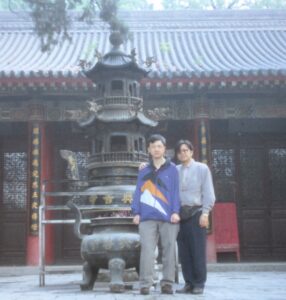 reported that his airline ticket and passport had been stolen. While our suspicion was that he had been inebriated, he still needed those documents to continue the journey. Fortunately, Dr. Jin and Mr. Li were able to convince the airline and the consulate to reissue the documents. What a predicament that could have been!
reported that his airline ticket and passport had been stolen. While our suspicion was that he had been inebriated, he still needed those documents to continue the journey. Fortunately, Dr. Jin and Mr. Li were able to convince the airline and the consulate to reissue the documents. What a predicament that could have been!
 A chance visit in Nanjing was to a restaurant–in what had been the home of Chiang Kai-shek as president of China before World War II. He gave it to his wife, and it’s now known as Mei-ling’s palace. What a surprise that was!
A chance visit in Nanjing was to a restaurant–in what had been the home of Chiang Kai-shek as president of China before World War II. He gave it to his wife, and it’s now known as Mei-ling’s palace. What a surprise that was!
That year in Beijing we got to the Great Hall of the People. While  there, Carolyn and I got our picture taken in the Shanghai Room. A great feeling in the Great Hall!
there, Carolyn and I got our picture taken in the Shanghai Room. A great feeling in the Great Hall!
The Korean part of the trip was memorable because one of our students found (most) of us lodging in a yogwan. A rich student lodged himself at a Western hotel. Ours was authentically Korean, with mats on the floor and condom machines. It was during the NBA finals, and I watched as Michael Jordan soared with one of his dunks, starting at the free  throw line, and the Taiwanese announcer went, “Wow.” Perhaps there was no other
throw line, and the Taiwanese announcer went, “Wow.” Perhaps there was no other word to describe it, and certainly not one in Chinese.
word to describe it, and certainly not one in Chinese.
And this was the group that had all the gun lighters confiscated!
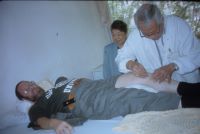
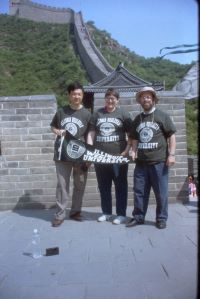







 but was caught in the emotionalism of the made for TV series. Believed President (Fred as Cold warrior ala Kennedy)
but was caught in the emotionalism of the made for TV series. Believed President (Fred as Cold warrior ala Kennedy)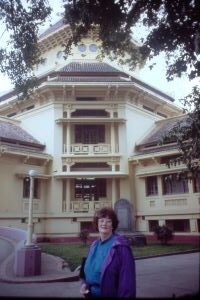

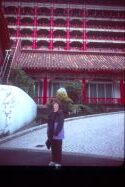

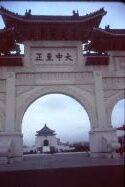






 January term class, which might be international.
January term class, which might be international.
 (nonexistent because it was cobbled together with faculty who had appointments in other departments, but taught an International Studies class), offered me the opportunity to develop a course on Trade and Diplomacy on the China Coast for International Studies credit. That was my 1994 segue into teaching a travel course for almost 20 years at IWU. It started in China, but gradually expanded to East and Southeast Asia, to Europe, and in 2001, a trip around the world. Most were in business.
(nonexistent because it was cobbled together with faculty who had appointments in other departments, but taught an International Studies class), offered me the opportunity to develop a course on Trade and Diplomacy on the China Coast for International Studies credit. That was my 1994 segue into teaching a travel course for almost 20 years at IWU. It started in China, but gradually expanded to East and Southeast Asia, to Europe, and in 2001, a trip around the world. Most were in business.
 The two memories that stand out the most to me from this trip both involved Xiamen, one of my favorite cities in China. Known as Amoy in earlier days, it had, on the island of Kulangsu, the “other” International Settlement (other than Shanghai) from imperialist days.
The two memories that stand out the most to me from this trip both involved Xiamen, one of my favorite cities in China. Known as Amoy in earlier days, it had, on the island of Kulangsu, the “other” International Settlement (other than Shanghai) from imperialist days.



 We were going to Guangzhou and staying on Shamian Island, which still had many of the old colonial buildings from the days it was THE international area. Cannons from the Opium War, sites from the postcards I collected!
We were going to Guangzhou and staying on Shamian Island, which still had many of the old colonial buildings from the days it was THE international area. Cannons from the Opium War, sites from the postcards I collected!
 Kuomintang-controlled Taiwan, it had been a military base and not much changed had been allowed. The accommodation was at a hotel with a honeymoon suite. John Archer and I shared it (only one faculty member
Kuomintang-controlled Taiwan, it had been a military base and not much changed had been allowed. The accommodation was at a hotel with a honeymoon suite. John Archer and I shared it (only one faculty member  was required at the time), with a vibrating heart shaped bed. Don’t ask. The boys came back disappointed from the massage parlor, complaining that they had gotten only a massage.
was required at the time), with a vibrating heart shaped bed. Don’t ask. The boys came back disappointed from the massage parlor, complaining that they had gotten only a massage.
 Beijing meant visiting the impressive sites that had dazzled and overwhelmed visitors from other countries, convincing them that China was the Middle Kingdom, a superior civilization. And of course, we spent time along the Great Wall, which had been a vain effort to keep the
Beijing meant visiting the impressive sites that had dazzled and overwhelmed visitors from other countries, convincing them that China was the Middle Kingdom, a superior civilization. And of course, we spent time along the Great Wall, which had been a vain effort to keep the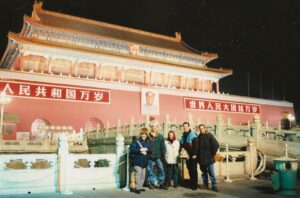 barbarians at bay and to mark the end of the civilized world. Being winter, many of the students purchased warm winter coats at the Red Army store I asked our guide to find for us.
barbarians at bay and to mark the end of the civilized world. Being winter, many of the students purchased warm winter coats at the Red Army store I asked our guide to find for us.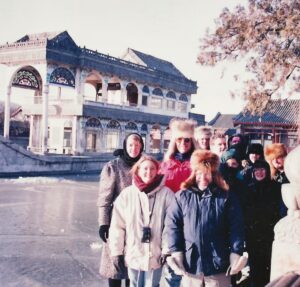
 with Samsung. The son got an independent study course so he could return to Seoul for J Term. The grateful dad provided us with a guide, a bus, and all the meals we desired, and we went to Panmunjom, Samsung, and the King Sejong grave (he invented the Korean alphabet)
with Samsung. The son got an independent study course so he could return to Seoul for J Term. The grateful dad provided us with a guide, a bus, and all the meals we desired, and we went to Panmunjom, Samsung, and the King Sejong grave (he invented the Korean alphabet) . As our last meal in Asia, he provided us with a meal at a private dining room at the top of the tallest building (at the time) in Asia, which included chateaubriand.
. As our last meal in Asia, he provided us with a meal at a private dining room at the top of the tallest building (at the time) in Asia, which included chateaubriand. Reminiscences 2024
Reminiscences 2024






 Chinese (3 years at the University of Illinois) returned. I visited places I’d not only read about, but written about in my dissertation. I imagined gunboats at Shanghai, kowtowing to the Emperor in the Forbidden City, or wreaking havoc at the old Summer Palace. An exotic atmosphere marked our trip from Kunming to Dali (home of the Bai nationality. The 11-hour bus ride with academics on the old
Chinese (3 years at the University of Illinois) returned. I visited places I’d not only read about, but written about in my dissertation. I imagined gunboats at Shanghai, kowtowing to the Emperor in the Forbidden City, or wreaking havoc at the old Summer Palace. An exotic atmosphere marked our trip from Kunming to Dali (home of the Bai nationality. The 11-hour bus ride with academics on the old







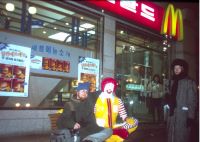

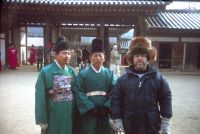
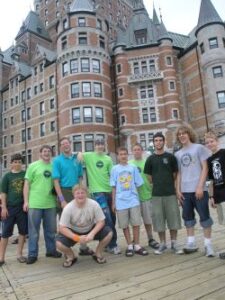




 Some of those were with my wife. Carolyn, who her own professional career, and thus had fewer opportunities to join me, given the constraints of her job. Nevertheless, Carolyn came on parts of trips, sometimes during and sometimes for extended trips afterwards. She was especially intrigued by a Baltic visit as a chaperone to the IWU choir. I promised instead that we would go cruising, and I kept my word. That began over a decade of trips, mostly Europe and the Mediterranean, which culminated in a land tour in March 2020, when Covid and we arrived at about the same time in Spain. She accompanied me on a number of business conference trips, including Viet Nam (shortly after it was opened to foreigners), my 1997 sabbatical to India and Southeast Asia, New Zealand, and China/Korea. These are documented in my blogs, but, unless connected with student trips, not in
Some of those were with my wife. Carolyn, who her own professional career, and thus had fewer opportunities to join me, given the constraints of her job. Nevertheless, Carolyn came on parts of trips, sometimes during and sometimes for extended trips afterwards. She was especially intrigued by a Baltic visit as a chaperone to the IWU choir. I promised instead that we would go cruising, and I kept my word. That began over a decade of trips, mostly Europe and the Mediterranean, which culminated in a land tour in March 2020, when Covid and we arrived at about the same time in Spain. She accompanied me on a number of business conference trips, including Viet Nam (shortly after it was opened to foreigners), my 1997 sabbatical to India and Southeast Asia, New Zealand, and China/Korea. These are documented in my blogs, but, unless connected with student trips, not in this book.
this book. A third fellow traveler was a student turned alumni, JR Glen. An Eagle Scout from Lincoln, JR was a great assist as we visited Tibet, Mongolia, and Burma.
A third fellow traveler was a student turned alumni, JR Glen. An Eagle Scout from Lincoln, JR was a great assist as we visited Tibet, Mongolia, and Burma.